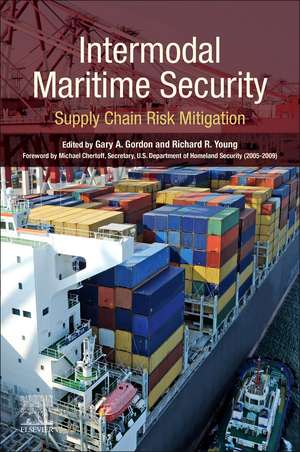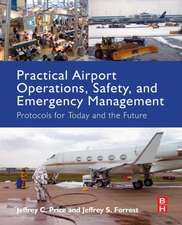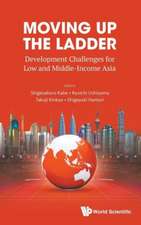Intermodal Maritime Security: Supply Chain Risk Mitigation
Editat de Gary A. Gordon, Richard R. Youngen Limba Engleză Paperback – 26 noi 2020
- Blends academic knowledge with real-world experiences
- Drawn from subject matter experts in academia, importers and exporters, transportation firms, and trade intermediaries
- Breadth of multidisciplinary coverage from maritime supply chains, port and maritime operations, as well as cyber and physical security
Preț: 622.92 lei
Preț vechi: 797.20 lei
-22% Nou
Puncte Express: 934
Preț estimativ în valută:
119.20€ • 124.76$ • 99.21£
119.20€ • 124.76$ • 99.21£
Carte tipărită la comandă
Livrare economică 24 martie-07 aprilie
Preluare comenzi: 021 569.72.76
Specificații
ISBN-13: 9780128199459
ISBN-10: 0128199458
Pagini: 400
Dimensiuni: 191 x 235 x 41 mm
Greutate: 0.68 kg
Editura: ELSEVIER SCIENCE
ISBN-10: 0128199458
Pagini: 400
Dimensiuni: 191 x 235 x 41 mm
Greutate: 0.68 kg
Editura: ELSEVIER SCIENCE
Public țintă
Primary audience:Transportation, Operations Management, Logistics, Supply Chain Management, and Maritime researchers, scholars, and graduate studentsSecondary audience: Maritime industry practitioners, consultants, and authorities
Cuprins
Section I Introduction
1. 9/11, MTSA and how we got to where we are
Section II Overview of Intermodal Maritime Operations
2. Intermodalism History, Advantages, and Disadvantages
3. Water and Landside Components
4. Other Transportation Modes
Section III The Nature of Intermodal Maritime Security Risk
5. Nature of the Intermodal Maritime Security Risk
6. Components of Intermodal Maritime Security Risk
7. Threats from Terrorists and other Violent Non-State Actors
8. Physical and Technological Considerations
9. Vulnerabilities, Gaps and the Future of Physical and Technological Security Measures
10. Information Security and Cyber Threats and Vulnerabilities
Section IV Security Measures and Public Policy
11. Multilateral Trading Partner Policies
12. Intermodal Transport Security: An Israeli Perspective
Section V Risk Mitigation Approach
13. Assessment at Foreign Ports of Loading
14. In-Transit Threats and Risk Management
15. Assessment at U.S. Ports
16. Routing Analysis, Risk and Resiliency
Section VI The Way Forward: Recommendations
17. Application of Systems Theory
18. Public Policy and Security Partnerships
19. Intermodal Maritime Security: Where Do We Go From Here?
1. 9/11, MTSA and how we got to where we are
Section II Overview of Intermodal Maritime Operations
2. Intermodalism History, Advantages, and Disadvantages
3. Water and Landside Components
4. Other Transportation Modes
Section III The Nature of Intermodal Maritime Security Risk
5. Nature of the Intermodal Maritime Security Risk
6. Components of Intermodal Maritime Security Risk
7. Threats from Terrorists and other Violent Non-State Actors
8. Physical and Technological Considerations
9. Vulnerabilities, Gaps and the Future of Physical and Technological Security Measures
10. Information Security and Cyber Threats and Vulnerabilities
Section IV Security Measures and Public Policy
11. Multilateral Trading Partner Policies
12. Intermodal Transport Security: An Israeli Perspective
Section V Risk Mitigation Approach
13. Assessment at Foreign Ports of Loading
14. In-Transit Threats and Risk Management
15. Assessment at U.S. Ports
16. Routing Analysis, Risk and Resiliency
Section VI The Way Forward: Recommendations
17. Application of Systems Theory
18. Public Policy and Security Partnerships
19. Intermodal Maritime Security: Where Do We Go From Here?

























